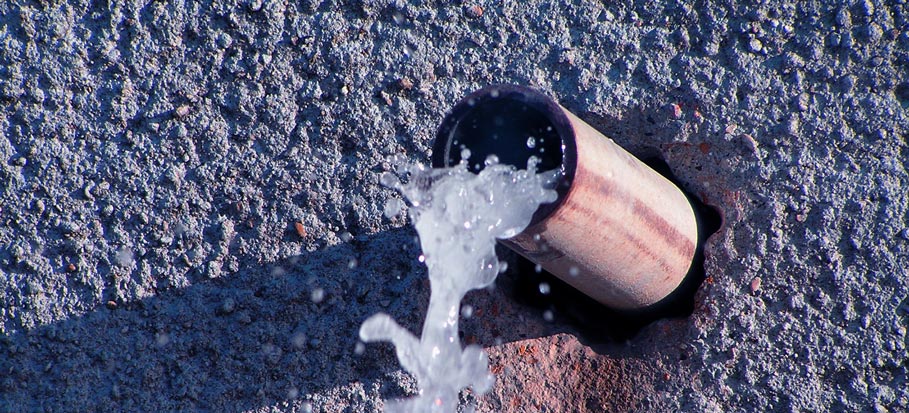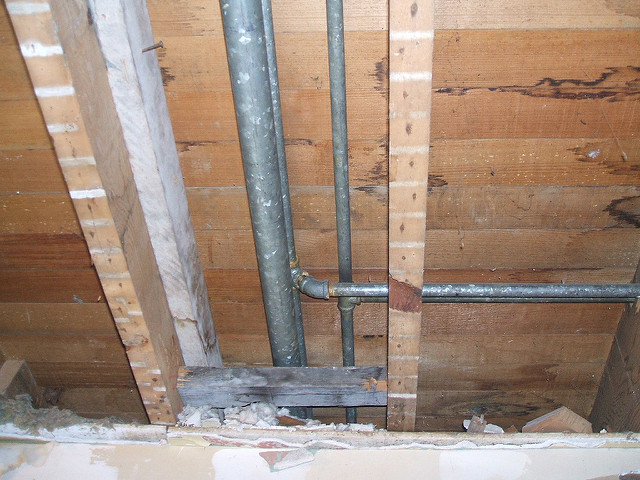The author is making a few good observations about Locating water leaks in general in this content further down.

Early detection of leaking water lines can alleviate a possible disaster. Besides conserving you cash, it will certainly lessen the aggravation and stress. The minute you find a leak, calling your plumber for fixings is the most effective remedy. Nevertheless, some tiny water leaks may not be visible. If you can not identify it with your nude eyes, below are some hacks that help.
1. Examine the Water Meter
Every house has a water meter. Examining it is a proven manner in which helps you find leakages. For starters, shut off all the water resources. Guarantee no person will flush, use the faucet, shower, run the washing machine or dishwasher. From there, go to the meter and also watch if it will transform. Since no one is using it, there need to be no movements. If it relocates, that indicates a fast-moving leakage. If you spot no adjustments, wait an hour or two and also examine back once again. This indicates you might have a sluggish leak that can even be below ground.
2. Inspect Water Usage
If you spot sudden modifications, regardless of your intake being the same, it implies that you have leaks in your plumbing system. A sudden spike in your expense shows a fast-moving leakage.
At the same time, a constant rise every month, even with the exact same routines, shows you have a slow leakage that's also slowly rising. Call a plumber to extensively check your property, particularly if you really feel a cozy area on your flooring with piping underneath.
3. Do a Food Coloring Test
When it comes to water usage, 30% comes from toilets. If the color in some way infiltrates your dish during that time without flushing, there's a leakage in between the storage tank and dish.
4. Asses Exterior Lines
Do not fail to remember to examine your outdoor water lines also. Must water leak out of the connection, you have a loosened rubber gasket. One tiny leak can squander heaps of water as well as increase your water costs.
5. Examine and Assess the Scenario
Property owners must make it a practice to examine under the sink counters and also even inside cupboards for any bad odor or mold and mildew development. These two red flags show a leak so punctual focus is needed. Doing regular inspections, also bi-annually, can save you from a major problem.
A lot more significantly, if you know your house is already old, maintain a watchful eye on your heating units, hose pipes, pipelines etc. Look for stainings and also deteriorating as the majority of pipelines as well as home appliances have a life span. They will also normally deteriorate due to deterioration. If you suspect leaking water lines in your plumbing system, don't wait on it to rise. Call an expert plumber today so you do not end up with a terrible mess in your house.
Early discovery of leaking water lines can mitigate a possible disaster. Some little water leakages may not be noticeable. Examining it is a surefire method that aids you uncover leaks. One small leakage can lose bunches of water and spike your water expense.
If you believe leaking water lines in your plumbing system, do not wait for it to intensify.
How to Know If Your Home Has a Hidden Leak
Water Meter Reveals Inexplicable Water Usage
If you’d like to test whether or not there’s a leak somewhere in your home, you can do this using your water meter. Here is how to conduct the test:
Don’t use any water in your home for at least 30 minutes; this also means not turning on faucets or water-using appliances.
Go outside, and check your water meter for activity.
If your water meter shows that there was activity, even though no one was using any water, this proves that there is a leak in your home.Visible Mold or Mildew Growth
Leaks behind walls create moist, dark environments that allow mold and mildew to grow and thrive. Eventually, you might see mold growth forming on the wall closest to a hidden leak.
If mold is growing in an area that receives a high amount of moisture, such as a bathroom, it may simply be an indication that better ventilation is needed. However, if you see mold growth on a wall or the ceiling in an area where you would not expect, you probably have a hidden leak.
Musty, Mildew Odor
Sometimes you might not be able to see the mold or mildew that is growing as a result of a leak. However, the smell can give the problem away just as easily. If you catch a whiff of something musty, there’s a good chance that old water is collecting somewhere in your home that you can’t see.
Stained/Warped Walls, Ceilings, or Floors
When your home soaks up water, a variety of red flags can become visible, including ceiling stains, bubbling drywall, warped walls, and sagging floors. While these issues can be caused by excess humidity, they can also be signs that a pipe or plumbing connection has started leaking behind your walls.
Inexplicably High Water Bill
After a while, you get a general sense for what your water bill should be. If you own a pool or sprinkler system, your bill will tend to be higher during summer. However, if you receive a water bill that seems especially high, and you can’t figure out what caused it, then you may have a hidden leak somewhere that’s increasing your bill.
https://www.plumbingjoint.com/blog/2019/july/how-to-know-if-your-home-has-a-hidden-leak/

I recently found that blog post about Hacks to detect leaks while surfing the internet. Liked our write up? Please share it. Let another person discover it. I praise you for your time. Visit us again soon.